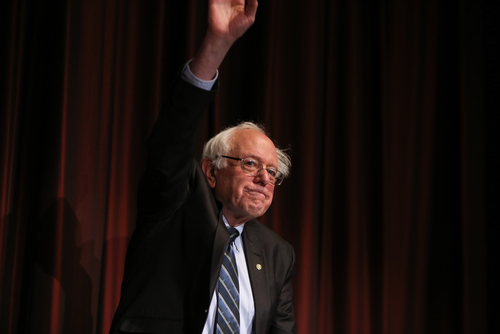
It had been twelve years since my wife and I had worked in a political campaign and attended a political rally. To say that we had been burned out by the 2004 presidential campaign would be a gross understatement with too many negative details to recount. One thing that was learned, however, was how the rightward movement of the political, economic, and social systems in the US had battered ideals.
But like the eternal optimist, fueled by irrepressible ideals for a just society that meets the needs of all its people, we joined yet another campaign after this long hiatus.
The use of phone banks in presidential campaigns had changed. Cell phones make it more difficult to reach potential voters, but newer dialing programs are better at reaching people on voting lists. And rather than making calls from a centralized location, which is always good for enhancing a sense of camaraderie with likeminded campaign volunteers, calls can now be made from anywhere using a computer, smart phone, or tablet. As long as expectations are high, and the phone lists are fairly accurate, the chance of abusive responses to phone calls is minimized. The latter was not so twelve years ago when hours spent calling lists of voters felt much like how the late rounds of a prizefight must feel.
Canvassing homes is a more risky proposition depending on the demographics of the canvassing assignment. The area I canvassed was a rental area in far western Massachusetts. The list of registered Democratic voters I had was small, but the majority of people were not home on the Sunday afternoon of canvassing, and those people who were home were hostile. I don’t know why the latter was so, but door-to-door canvassing has never been a positive experience for me. I’ve never canvassed in an economically “advantaged” area, so I have nothing with which to compare the results from years of knocking on doors and talking with potential voters.
The highlight of the campaign thus far was the huge rally at UMass Amherst on Monday, February 22 “Young and old cheer Bernie Sanders at UMass Amherst,” (Boston Globe, February 22, 2016). The serpentine line of Sanders’ supporters wound in a seemingly endless throng of students from the many colleges and universities in central Massachusetts and folks from nearby communities. A cold wind blew from the north, which made waiting in line to enter the cavernous Mullins Center at UMass all the more uncomfortable.
Once inside, the wait for Sanders to appear seemed like it would last forever. Bands played, speeches of local politicians and a union leader took up some of the time in the sports complex. It was a welcome reprieve from the cold and wind outside the arena.
When Sanders finally took the stage, his speech electrified the crowd of about 8,000 supporters. He eloquently and forcefully addressed the issues of how the political system was at the beck and call of the interests of extreme wealth; student debt; financing a college education; investing in schools and daycare; equal pay for equivalent work of men and women; income inequality; the plight of the homeless and veterans, those living on social security pensions, disability pensions, and veterans benefits; the catastrophe of climate change; the decaying infrastructure of the US; how the economy has failed to provide decent jobs for millions of people; and how his adversary, former Secretary of State Hillary Clinton, could not possibly remain unaffected by the outpouring of massive amounts of cash from Super PACs funding her campaign. He spoke of how Citizens United had unleashed that money and how his campaign has relied on the contributions of about 4 million small donors. It seemed as if the energy of the powerful sound system in the complex had been transformed into the electrifying response of the gathered thousands. I have not witnessed such a response to a political message since Dustin Hoffman spoke at a rally for Eugene McCarthy’s candidacy for president in August 1968 in Providence, Rhode Island. And Sanders did not shirk in providing the specifics of where money would come from to fund proposed programs. Offshore accounts of US businesses would be taxed. A tax would be paid on investment transactions. The familiar cry of the far right about “tax and spend,” would be replaced by progressive taxation on wealth with those monies being put back into the economy for the betterment of all people. Had so many years passed since it was possible to give voice to the aspirations of average people who wanted to take back the political, economic, and social system and make it work for ordinary people?
It felt as if Sanders was giving voice to the lost ideal of a society worth living in after the feeling of angst that is best voiced by Charles Dickens in David Copperfield when his main character expresses how bereft of hope his life has been.
Sanders has discussed his differences with Hillary Clinton vis-à-vis the start of the Iraq War, but he needs to talk honestly about how war has become such an accepted part of life in the US, as endless wars continue almost without criticism.
I would have liked Sanders to have addressed the link between those endless wars that the US is now involved in and how the outlays for those wars has sapped the economy of necessary funds with which to challenge the chasm of income inequality that now exists in the US. But, I was not disappointed by what I did hear.